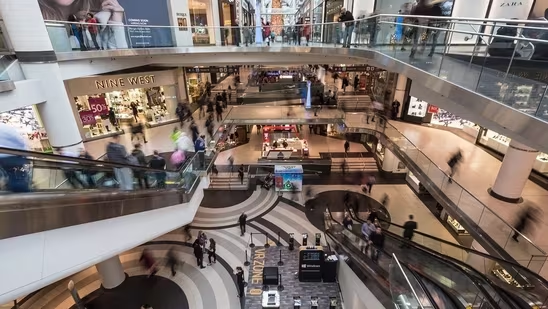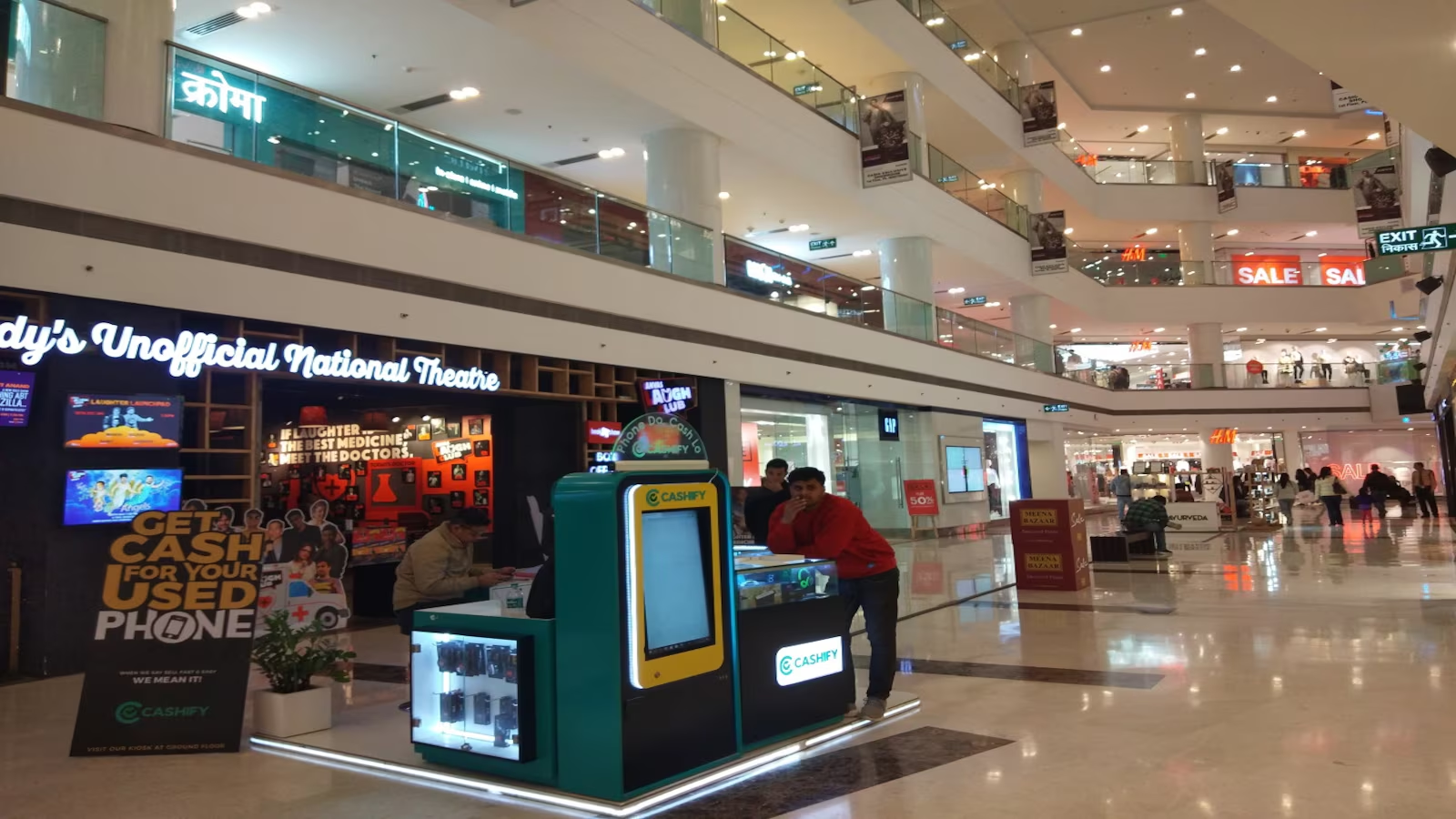News
Office leasing in India grows 97% Y-o-Y to about 11.4 million sq. ft. in Q1 2022


National – April 10, 2021 – Real estate consulting firm, CBRE South Asia Pvt. Ltd, on Monday announced the findings of its latest office report ‘CBRE India Office Figures Q1 2022’. The report observed that the office sector in India continued to witness a robust recovery in Q1 2022, as leasing activity grew by 97% Y-o-Y to touch 11.4 million sq. ft.
Bangalore, Chennai and Delhi-NCR dominated absorption during the quarter, accounting for almost two-thirds of the transaction activity. Technology corporates drove leasing with a share of about 34%, followed by BFSI firms (17%), flexible space operators (13%), engineering & manufacturing (12%) and research, consulting & analytics (11%) firms.
City Highlights:
Bangalore emerged as frontrunner in overall office leasing in Q1 2022
- EBD, SBD and ORR drove leasing activity during the quarter
- Key sectors driving absorption included research, consulting & analytics (30%), technology (25%) and BFSI (22%) firms.
Hyderabad’s office leasing was led by tech sector
- SEZ spaces accounted for 74% and 79% of development completions and absorption, respectively.
- Key sectors driving absorption included technology corporates (90%) and flexible space operators (7%).
Delhi-NCR’s leasing outpaced supply; led by tech and BFSI corporates
- Transaction activity was driven by the IT and SEZ segments, with a cumulative share of 83%.
- Key sectors driving absorption included technology (21%), BFSI (19%), and engineering & manufacturing (11%) players.
Mumbai’s absorption outpaced supply; BFSI and flex players drove leasing
- Space take-up was witnessed across both IT and non-IT segments with a share of 53% and 41%, respectively.
- Key sectors driving absorption included BFSI firms (24%), flexible space operators (21%), and engineering & manufacturing companies (16%).
Chennai saw record increase in leasing, backed by entry of new occupiers
- MPH, OMR Zone 1 and Off CBD drove leasing activity in Q1 2022
- Key sectors driving absorption included technology (34%), engineering & manufacturing (30%), and BFSI (13%) corporates.
Pune’s quarterly absorption led by flexible space operators and technology firms
- Around 60% of the absorption and 57% of the supply in Q1 2022 were witnessed across IT developments.
- Key sectors driving absorption included flexible space operators (32%), technology (23%) corporates and BFSI (18%) firms.
Kolkata saw technology firms and flexible space operators lead quarterly absorption
- The IT segment was the sole driver of transaction activity.
- Key sectors driving absorption included technology firms (33%), flexible space operators (25%), and BFSI (19%) companies.
Kochi saw flexible space operators and technology firms lead quarterly leasing
- Leasing activity was primarily witnessed in SEZ spaces.
- Key sectors driving absorption included flexible space operators (57%) and technology companies (43%).
Ahmedabad saw BFSI and flex players lead quarterly leasing
- CBD, SBD and PBD drove leasing activity during Q1 2022.
- Key sectors driving absorption included BFSI companies (59%), flexible space operators (20%) and life sciences firms (16%).
The report further highlighted that office space take-up was driven by small- (less than 10,000 sq. ft) to medium-sized (10,000-50,000 sq. ft.) transactions with a share of around 84%. Pune and Chennai, followed by Delhi-NCR and Bangalore, dominated large-sized deal closures.
Supply witnessed in Q1 2022 was around 9.4 million sq. ft. – a slight dip of around 11% Y-o-Y and 41% Q-o-Q. Bangalore, Hyderabad and Chennai dominated development completions, accounting for a cumulative share of about 70%. Supply was driven by non-SEZ developments with a share of around 83%.


Anshuman Magazine, Chairman & CEO – India, South-East Asia, Middle East & Africa, CBRE said, “With the government’s evolving COVID-19 protocols and the recovery in office leasing in 2021, we expect the positive momentum to further strengthen in 2022.
We continue to witness a pickup in long-term decision-making by occupiers, aided by ‘return-to-work’ strategies, thereby accelerating project completions.”


Ram Chandnani, Managing Director, Advisory & Transactions Services, CBRE India said, “As economic recovery continues to gain momentum, we expect the increase in leasing activity to bring a new focus on large-sized and high-quality buildings by developers to differentiate their assets and attract occupiers.
We also expect large institutional players to continue with greenfield investments via JVs / partnerships / platforms or brownfield investments via REITs, which in turn would also boost the upcoming supply in the coming years.”
Other observations
Supply:
- Supply would continue to be dominated by Bangalore, Hyderabad and Delhi-NCR, which would drive close to 70% of the completions in 2022.
- SEZ supply would mostly be led by Hyderabad and Delhi-NCR, while non-SEZ supply would be led by Bangalore, followed by Delhi-NCR and Hyderabad.
Office space take-up:
- The share of large-sized deals remained similar to previous quarter at about 7%, while the share of medium- to large-sized (more than 10,000 sq. ft.) deals witnessed a rise.
- As in 2021, Bangalore, Hyderabad and Delhi-NCR are expected to continue to drive transaction activity in 2022.
Key trends:
- Renewals, renegotiations, and addition of flexibility options are likely to be the focus of occupiers in the short term.
- We expect to see clearer evidence emerging in any corporates’ intended shift towards hybrid working policies, with several occupiers planning to implement policies allowing office-based working with the option of working remotely.
- With an increased focus on wellness, user experience and sustainability, occupiers are expected to demand more sophisticated and tech-enhanced real estate offerings.
- Environmental & sustainability issues, such as carbon emissions, the use of sustainable materials, energy efficiency and wellness enhancements are likely to become ever more important to occupiers and owners of office buildings.
-



 News4 weeks ago
News4 weeks agoGodrej Properties Sells Rs 3k cr+ Homes of Godrej Zenith, Gurugram, within 3 days
-



 News3 weeks ago
News3 weeks agoNoida’s High-Rise Societies Face Multiple Challenges Despite Rapid Urban Growth
-



 News3 weeks ago
News3 weeks agoOlive Announces Dhruv Kalro as Co-Founder
-



 News4 weeks ago
News4 weeks agoGodrej Properties Sells 5000+ Homes of Rs 9.5 cr in Q4FY24, Bookings up 84% YoY
-



 News4 weeks ago
News4 weeks agoVestian: Domestic Investors Dominate Institutional Investments in Jan-Mar’24
-

 News3 weeks ago
News3 weeks agoIndia to become the fastest-growing silver economy, housing up to 17% of the world’s elderly population by 2050: CBRE Report
-



 News4 weeks ago
News4 weeks agoHRERA Gurugram Rejects Godrej Properties’ Project Extension Application, Account Frozen For Prolonged Non-compliances
-



 News2 weeks ago
News2 weeks agoSKA Forays In Luxury Housing: Launches SKA Destiny One in Greater Noida, To Invest Rs 592 Crores



























